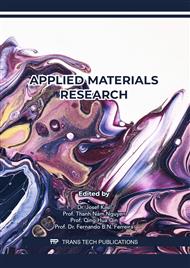p.127
p.133
p.139
p.147
p.157
p.163
p.171
p.177
p.187
Thermal Stress of Early-Age Concrete Made with Different Cement Compositions
Abstract:
A temperature stress testing machine (TSTM) was used to investigate effect of cement composition and temperature history on thermal stress of concrete. Results show that the benefit of higher amount of C3S on concrete strength enhancement was compromised by the relatively higher temperature rise at early age, leading to a lower temperature difference. However, by means of a delicate design of cooling history, the deficiency of concrete with higher amount of C3S can be compensated and the cracking sensitivity was closer to that of concrete with lower amount of C3S.
Info:
Periodical:
Pages:
157-161
Citation:
Online since:
June 2022
Authors:
Price:
Сopyright:
© 2022 Trans Tech Publications Ltd. All Rights Reserved
Share:
Citation:


